
Stockbyte/Stockbyte/Getty Images
American-style omelets have a fluffy, aerated texture that comes from a vigorous whipping motion and, sometimes, a leavening agent such as baking powder. Baking powder gives omelets lift by creating carbon dioxide, first when it comes in contact with raw eggs, then when the eggs reach about 180 degrees Fahrenheit in the pan. Baking powder won't do anything if you don't whisk the eggs vigorously and if you use too low heat on the stove, so you still have to work hard and fast over moderately high heat to get the extra fluffiness you're looking for.
Crack two eggs in a mixing bowl for each omelet and add about 1 tablespoon milk for each egg.
Add a pinch each of baking powder and kosher salt along with a crack or two of black pepper, if desired. You only need about 1/4 teaspoon of baking powder for every two eggs; a little more won't help or hurt, so make it a healthy pinch.
Whisk the eggs vigorously until foamy and homogenized. Heat a couple tablespoons of butter or oil in a 6- to 8-inch nonstick skillet over medium heat for several minutes.
Pour the eggs in the pan and let them cook until you see curds form, or about 10 to 15 seconds. Lift the pan and swirl it several times to set the eggs into the edges all the way around.
Return the pan to the heat and let the eggs cook until the bottom cooks, about 1 minute. Gently smooth the top of the omelet with a rubber spatula while the bottom cooks to even it out.
Loosen the edges of the omelet using a rubber spatula. Swirl the pan and lift the omelet gently with the spatula to make sure it moves freely in the pan.
Add any ingredients to half of the top of the eggs, keeping them at least one inch from the edges.
Fold the half of the omelet without ingredients over the other half. Depending on your proficiency, you can use a quick flick of your wrist to fold the omelet or the spatula; you can even slide the omelet out on the plate and fold it with your hands -- whatever works. Serve.
Related Articles

How to Cook Eggs in a Convection Oven
How to Make an Overeasy Egg
How do I Keep Scrambled Eggs From ...

How to Make Your Deviled Eggs Look Great
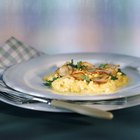
The Best Types of Pans to Cook ...

How to Melt Marshmallows for Icing
How to Cook Scrambled Eggs Using a Slow ...

How to Cook Eggs Sunny Side Up Without ...

How to Cook Eggs in Cupcake Pans
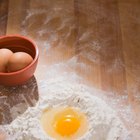
Can You Substitute Egg Beaters for Eggs ...
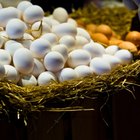
How to Cook a Hard Boiled Egg With a ...

What Happens When You Forget to Put ...

Calories of Egg Whites Vs. Whole Eggs

How to Cook Eggs in a Convection Oven
How to Fry an Egg Without It Turning ...
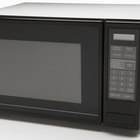
How to Cook Eggs With a Microwave ...

How to Use a Nordic Ware Omelette Maker ...
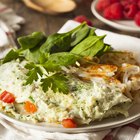
How to Cook an Egg White Omelet in the ...

Nutrition Facts of Eggs Over Easy
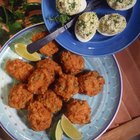
Can I Substitute Ranch for Mayo in ...
References
Writer Bio
A.J. Andrews' work has appeared in Food and Wine, Fricote and "BBC Good Food." He lives in Europe where he bakes with wild yeast, milks goats for cheese and prepares for the Court of Master Sommeliers level II exam. Andrews received formal training at Le Cordon Bleu.
Photo Credits
Stockbyte/Stockbyte/Getty Images